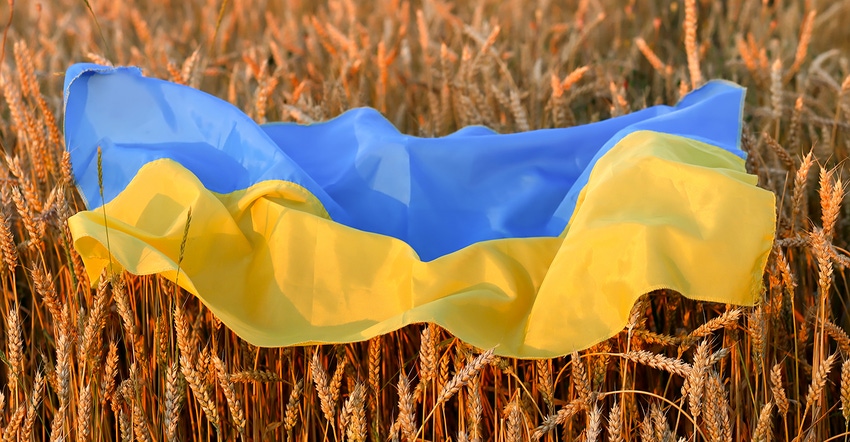Uncertainty with the feed supply could prompt further reductions in European hog production.
April 27, 2022

As the war in Ukraine continues, the potential impact on global agriculture and food continues to expand. While there is some red meat trade that could be affected, U.S. Meat Export Federation Vice President of Economic Analysis Erin Borror says it's the feed side that is most concerning.
"On the red meat side, Russia, Ukraine and Belarus combined, I think exported maybe around 60,000 tons of beef to China, so there is a little bit of red meat trade that gets interesting, but where it really matters is on the feed side," Borror says. "Ukraine is the number three corn exporter, number two barley exporter, number one sunflower exporter, and number five on wheat and Russia has been the largest wheat exporter, so there's obviously growing concern about feed availability."
This is especially concerning for Europe as Ukraine supplies 40% of the European Union's imports of corn, barley and wheat. For China, Ukraine supplies about 23% of those same imports.
"On the feed side, there's real concern about availability because not only are we worried about this crop that should be planted right now, but also the grain in storage that was still to be exported for the rest of this crop year and those exports are not going out of the Ukrainian ports right now," Borror says. "They're working to try to do some grain trade by rail into Europe, but basically you're looking at product that's still yet to ship not going, and then real questions about the current crop and whether Ukraine can get it in the ground."
That uncertainty with the feed supply could prompt further reductions in European hog production. Borror says Europe has already been reducing their herds as pork prices have been under pressure since African swine fever was detected in Germany in September 2020.
"That really exacerbated a downturn in Europe's pig prices and then you had China demand, essentially evaporating last summer, so mid of 2021, and so European producers were losing money and that's before we see war in Ukraine," Borror says.
In December, Europe's pig inventory was down 3%, sow inventory down 3.6% and there were steep decreases in Germany specifically, which Borror says is the combination of ASF and additional animal welfare and environmental regulations and the costs associated with those that have been impacting pork producers.
"There's contraction underway already in Europe and then you add on higher, even higher, feed costs and real concerns about availability," Borror says. "In the very immediate situation we've seen those European pig prices jump by like 35% over the past month and we're starting to close that gap. Where we have been at a premium — the U.S. has been at a premium to Europe since March of 2021 — and that's not normal. Usually, we're the lower cost producer and thus lower price and we've been out of whack since for over a year now."
The impacts on global food systems will likely stretch beyond this growing season.
"They should be planting now," Borror says. "I've heard completely mixed reports on how that may or may not progress, but we also know there's poor infrastructure damage. We know there's concern about ships not wanting to sail into a war zone, so you have both likely limited production, likely curtailed exports out of Ukraine, tight global balance sheets, even before this."
On the feed side, Borror expects the impact to be significant and something that's going to last at least into next year, if not the next two years.
"And then you have all these knock-on effects, what inflation does in these economies and especially in the more developing countries and the concern about food availability and pricing and the ripple impacts across the world," Borror says.
Source: U.S. Meat Export Federation, which is solely responsible for the information provided, and wholly owns the information. Informa Business Media and all its subsidiaries are not responsible for any of the content contained in this information asset.
About the Author(s)
You May Also Like



